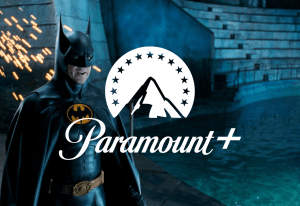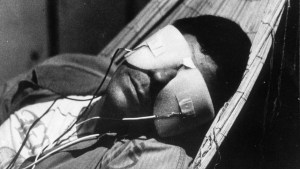The highly-anticipated Watchmen series from Damon Lindelof debuted tonight and, like the seminal comic book series of the same name from Alan Moore, Dave Gibbons, and John Higgins that inspired the HBO series, the story takes place in the present day of an alternate history. This is a world in which the United States won the Vietnam War, Richard Nixon remained in office until 1985, and more, but that doesn’t mean there aren’t real-life events that make up the tapestry of the tale and it’s one such event that kicks off tonight’s series premiere: the 1921 Tulsa Race Riot, perhaps better known as the Black Wall Street Massacre.
Videos by ComicBook.com
Warning: Spoilers for tonight’s series premiere of Watchmen, “It’s Summer and We’re Running Out of Ice”, beyond this point.
While Watchmen is set in an alternate, present-day Tulsa, Oklahoma, the episode opens in 1921 Tulsa instead, with a little boy watching a movie in a theater, a woman playing piano to supply the soundtrack. However, what looks at first to be a charming scene quickly takes a horrifying turn. In the moments that follow, that little boy and his family flee the theater as chaos fills the street. All round them black citizens are being attacked and killed by white people — many wearing the garb of the KKK — as planes fly overhead and drop explosives on buildings. The boy and his parents make it to a garage where a desperate attempt to escape is staged. There’s no room for the boy’s parents in the truck, so his father scrawls a note, stuffs it in the boy’s pocket before putting him in a box on the vehicle. As the truck leaves the child watches through a bullet hole in the enclosure as a bomb falls on the garage he’s just left, killing everyone left inside — including his parents. Next, we see of the child, the truck, it’s crashed, all of the adults dead, the little boy and an infant girl left as the only survivors as the city burns in the distance.
It’s a chilling, heartbreaking sequence, but it’s sadly one that isn’t just put together for Hollywood. The scene depicts a real-life event, the Black Wall Street Massacre. In 1921, the Greenwood district of Tulsa, Oklahoma was perhaps the most affluent and successful black neighborhood in the entire United States and was referred to as Black Wall Street due largely in part to the successful businesses and affluent residents that made up the district. However, on May 31, 1921 19-year-old Dick Rowland, a young black shoeshine, was accused of the assault of a white elevator operator at the nearby Drexel Building, 17-year-old Sarah Page. Rowland was taken into custody and a group of angry local white residents gathered outside of the courthouse. Rumors soon spread that Rowland had been lynched, rumors that prompted some of the black residents to come to the courthouse armed. Shots were fired, resulting in the death of ten white people and two black people (via History.com).
In retaliation, the white residents led a riot on the Greenwood District. In the early hours of June 1, 1921, a white mob began setting the businesses in Greenwood on fire, turning away Tulsa Fire Department crews at gunpoint when they arrived to help. By daybreak, white citizens were looting and burning homes and businesses in a 35 city block area. Privately owned aircraft also aided in the racist attack on Greenwood, with eyewitness reports describing “burning turpentine balls” being dropped on buildings. Other rioters simply opened fire on black residents fleeing for their lives.
“Planes circling in mid-air: They grew in number and hummed, darted and dipped low,” one eyewitness account of the event (via Smithsonian) states. “I could hear something like hail falling upon the top of my office building. Down East Archer, I saw the old Mid-Way hotel on fire, burning from its top, and then another and another and another building began to burn from their top.”
In the roughly 16 hours of violence and terror, the entire Greenwood district had been destroyed. More than 10,000 people were left homeless and while the official death count per the Oklahoma Department of Vital Statistics was 36 — 26 black and 10 white — historians believe that number is far too low with a 2001 state commission estimating that the real count is between 100 and 300 black deaths stemming from the riot (via Washington Post).
In the aftermath of the massacre, many survivors left Tulsa and those who remained didn’t speak of the event, leading the massacre to be largely omitted from historical record. It was only in 1996 that an effort was made to investigate the event and prepare a report. The report, put together by the Oklahoma Commission to Study the Tulsa Race Massacre (renamed Tulsa Race Massacre Commission in 2018), published its final report in 2001. The centennial anniversary of the horrific event will be marked in 2021.
Watchmen airs Sundays at 9/8c on HBO.








